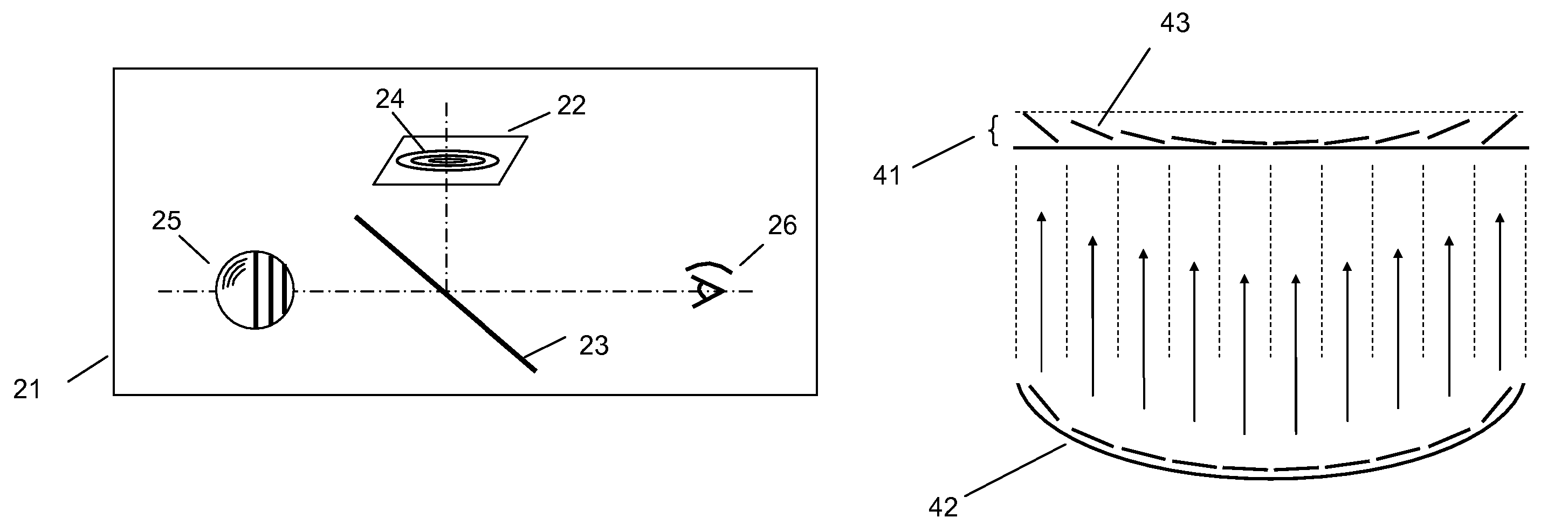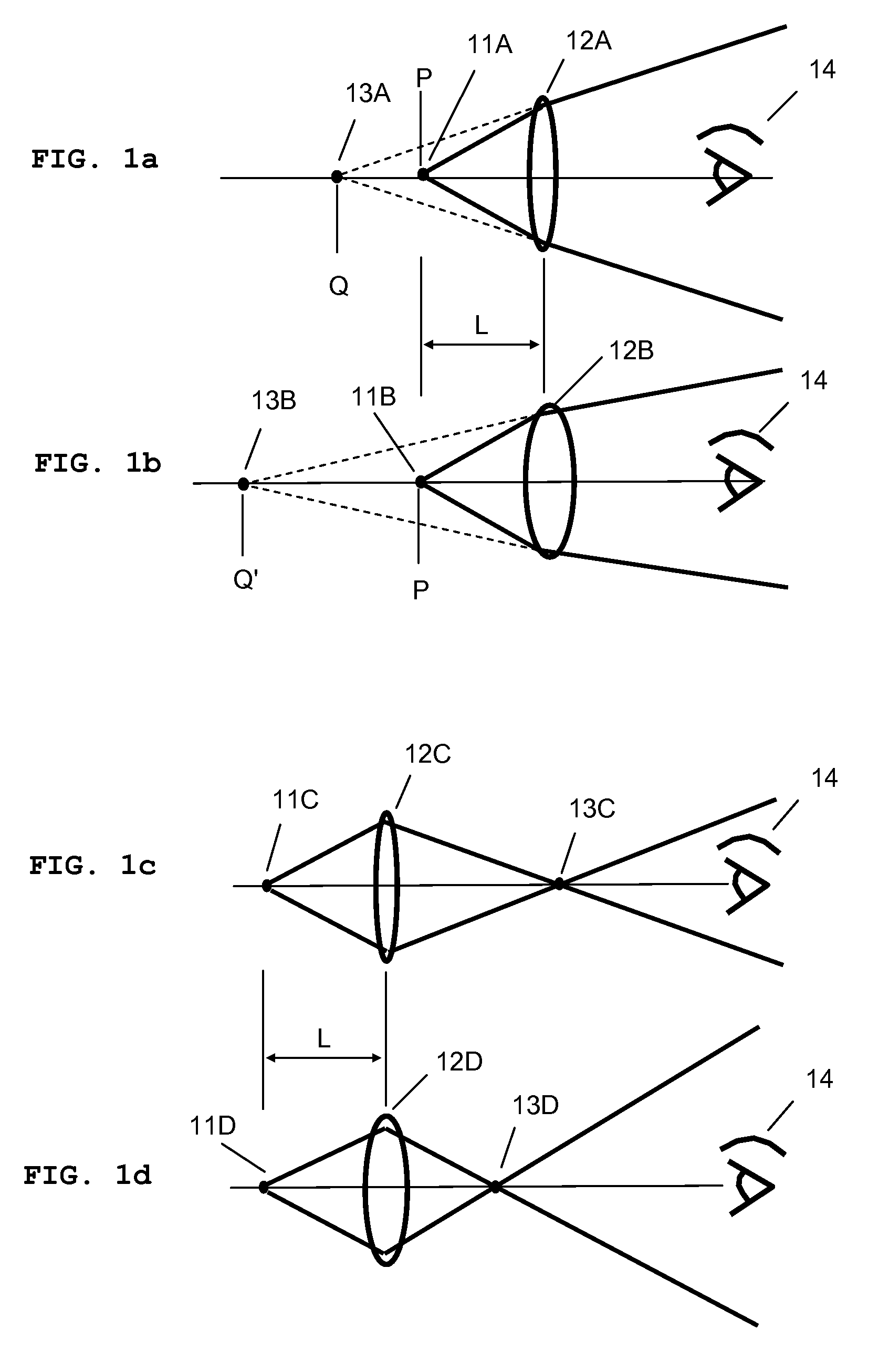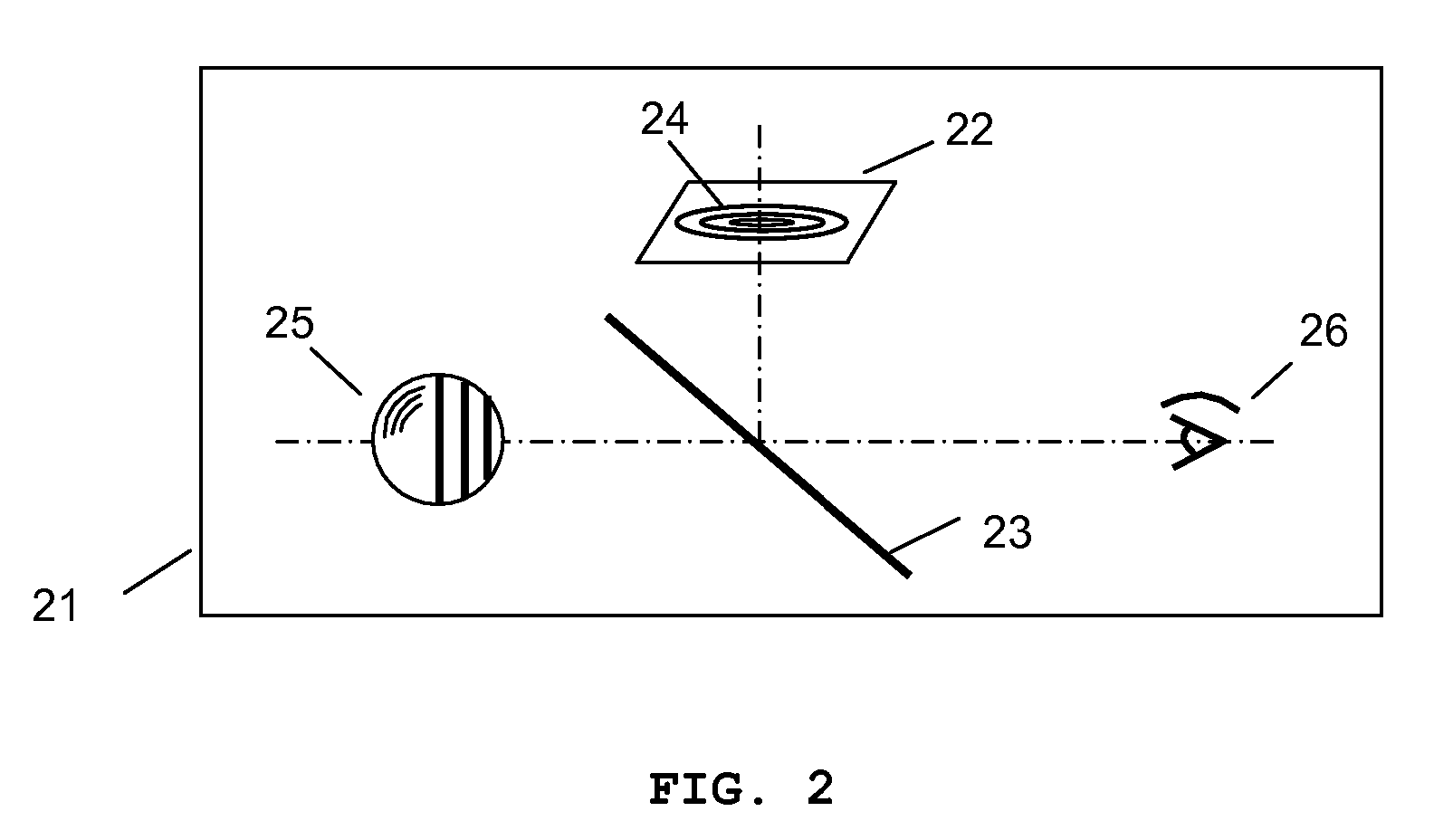Three-dimensional display using variable focal length micromirror array lens
a micromirror array and variable focal length technology, applied in the direction of mirrors, instruments, mountings, etc., can solve the problems of unsuitable display, limited use of holography for three-dimensional image display, and the method does not generate a three-dimensional image in spa
- Summary
- Abstract
- Description
- Claims
- Application Information
AI Technical Summary
Benefits of technology
Problems solved by technology
Method used
Image
Examples
Embodiment Construction
[0043]FIG. 1 illustrates the general principle regarding the distance or depth of an image formed by a lens, and the focal length of the lens. When the light from an object passes through a lens, it converges or diverges depending on the distance L between the object and the lens, and the focal length of the lens. In the description of the present invention, a lens means an optical element that focuses light, and is not confined to a refractive type lens.
[0044]FIG. 1a shows that the light from an object 11A passes through a lens 12A and then diverges at a different angle. FIG. 1b is a similar diagram for a lens 12B having a shorter focal length. The light refracted by the lenses 12A and 12B forms virtual images 13A and 13B, respectively. When a viewer 14 sees the refracted light, the viewer perceives objects 11A and 11B, which is positioned at point P, as existing at points Q and Q′, respectively.
[0045]FIG. 1c shows that the light from an object 11C passes through a lens 12C and the...
PUM
 Login to View More
Login to View More Abstract
Description
Claims
Application Information
 Login to View More
Login to View More - R&D
- Intellectual Property
- Life Sciences
- Materials
- Tech Scout
- Unparalleled Data Quality
- Higher Quality Content
- 60% Fewer Hallucinations
Browse by: Latest US Patents, China's latest patents, Technical Efficacy Thesaurus, Application Domain, Technology Topic, Popular Technical Reports.
© 2025 PatSnap. All rights reserved.Legal|Privacy policy|Modern Slavery Act Transparency Statement|Sitemap|About US| Contact US: help@patsnap.com



